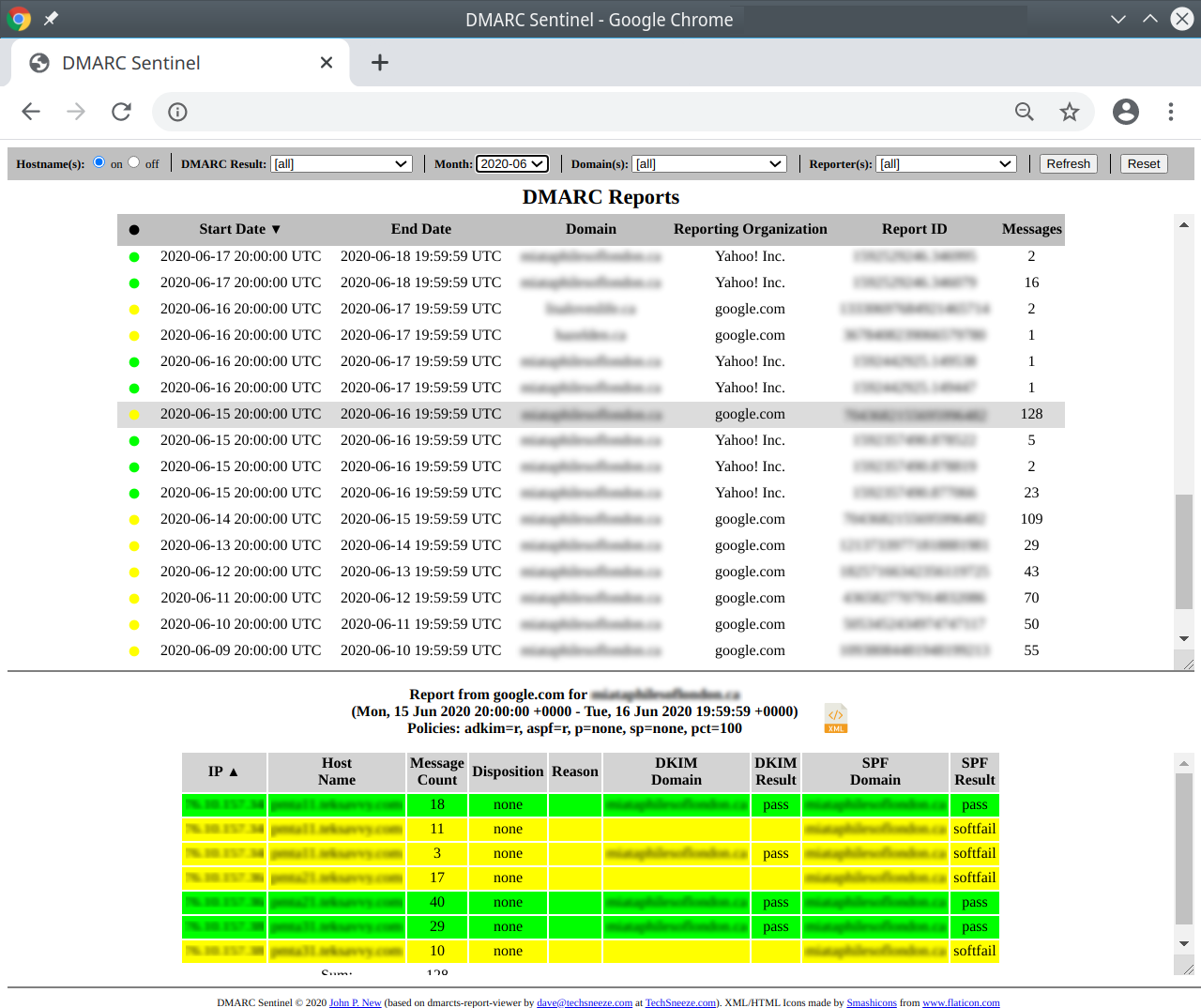User experience
We found DMARCly's user interface to be well-structured and generally intuitive. The dashboards provide clear visualizations of DMARC compliance, sources, and threats, making it relatively easy to grasp your email ecosystem's health at a glance.
Setting up DMARC records and configuring alerts is straightforward, guided by the platform's logical flow. While the sheer volume of data and features might initially seem overwhelming to new DMARC users, the design does a good job of presenting complex information accessibly.
The Techsneeze DMARCts report viewer offers a very different user experience. As a self-hosted, open-source tool, its UX is dictated by its functional simplicity. It presents data in basic tables, requiring users to manually interpret the raw DMARC XML output.
Installation and initial setup require significant technical expertise, involving server configuration, database setup, and PHP environment. Once running, navigating the data is simple because there are fewer options, but users expecting modern UI/UX or interactive dashboards will be disappointed. It's a tool for engineers, by engineers, one might say.











































 0 / 5(0)
0 / 5(0)
 0 / 5(0)
0 / 5(0)



